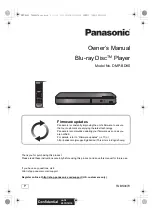
25
connect the receiver or audio processor to the secondary (DIGITAL AUDIO) HDMI
port. This dual connection allows the full video capability of Strato to be
delivered to the display, while still providing full fidelity audio to the receiver.
Very Good Quality, Single and Dual Connections
If the display supports HDMI 2.0 and HDCP 2.2, but at 10.2 Gbps, Strato can
still output 4K Ultra HD, including 4K Ultra HD at 60 frames per second.
However, at 60fps, video will be limited to 8-bit color.
With such a display, configuring Strato to “Allow Display Mode Changes” in the
Video tab of the browser interface’s Settings dialog will allow Strato to switch to
24 frames per second for film content. At 24 fps, Strato can output 10-bit color
even over a 10.2 Gbps link for displays that support it, so the image for film
content is identical to what you would see on an 18 Gbps connection.
As with the 18 Gbps connection options described above, you can connect the
audio equipment to the second HDMI port to if the audio equipment has HDMI
or HDCP limitations that the display does not.
Even if the display only supports a maximum of 10.2 Gbps, consider choosing
cables that are tested to work at 18 Gbps or higher, especially when cables are
run in-wall or in other difficult to replace installations. This will help to ensure a
smoother upgrade path to a new display in the future.
1080p
Strato provides a great experience with a 1080p display. 4K Ultra HD content is
down-scaled for display at 1080p, and the Kaleidescape onscreen display runs
at a full 60 fps. Using Strato with a 1080p display is a good choice in an
installation that has a mix of 4K and 1080p displays, especially if the 1080p
displays may be upgraded over time. If you can use 18 Gbps-capable cables, a
later upgrade should also go more smoothly.
















































